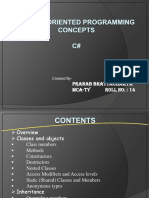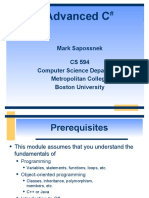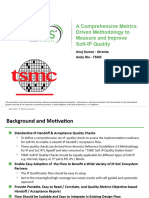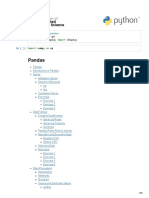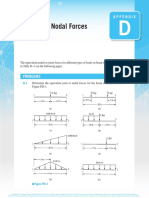0% found this document useful (0 votes)
8 views30 pagesLecture 2 - Creating Types in Csharp
The document provides an overview of creating types in C#, covering topics such as namespaces, classes, methods, access modifiers, inheritance, polymorphism, interfaces, enums, generics, and delegates. It explains the structure and purpose of each concept, including how to define and use them effectively in C#. Additionally, it highlights the differences between constant and read-only variables, as well as the types of delegates available in C#.
Uploaded by
m09221011Copyright
© © All Rights Reserved
We take content rights seriously. If you suspect this is your content, claim it here.
Available Formats
Download as PDF, TXT or read online on Scribd
0% found this document useful (0 votes)
8 views30 pagesLecture 2 - Creating Types in Csharp
The document provides an overview of creating types in C#, covering topics such as namespaces, classes, methods, access modifiers, inheritance, polymorphism, interfaces, enums, generics, and delegates. It explains the structure and purpose of each concept, including how to define and use them effectively in C#. Additionally, it highlights the differences between constant and read-only variables, as well as the types of delegates available in C#.
Uploaded by
m09221011Copyright
© © All Rights Reserved
We take content rights seriously. If you suspect this is your content, claim it here.
Available Formats
Download as PDF, TXT or read online on Scribd
/ 30



